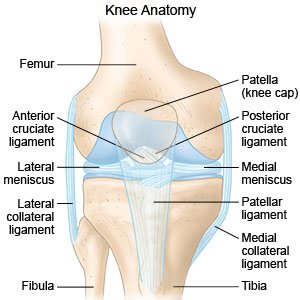Meniscectomy
Medically reviewed by Drugs.com. Last updated on Sep 23, 2025.
A meniscectomy is surgery to repair your meniscus, or remove any torn pieces. The meniscus is cartilage in your knee that acts like a shock absorber, and helps your knee move correctly.
 |
WHILE YOU ARE HERE:
Before your surgery:
- Informed consent is a legal document that explains the tests, treatments, or procedures that you may need. Informed consent means you understand what will be done and can make decisions about what you want. You give your permission when you sign the consent form. You can have someone sign this form for you if you are not able to sign it. You have the right to understand your medical care in words you know. Before you sign the consent form, understand the risks and benefits of what will be done. Make sure all your questions are answered.
- An IV is a small tube placed in your vein that is used to give you medicine or liquids.
- Anesthesia is medicine to make you comfortable during the surgery. Healthcare providers will work with you to decide which anesthesia is best for you.
- General anesthesia will keep you asleep and free from pain during surgery. Anesthesia may be given through your IV. You may instead breathe it in through a mask or a tube placed down your throat. The tube may cause you to have a sore throat when you wake up.
- Spinal anesthesia numbs the surgery area. You may still feel pressure or pushing during surgery.
During your surgery:
- Your surgeon will make one or more small incisions in your knee. You may instead have open knee surgery with one larger incision. Your surgeon will put an arthroscope inside your knee. An arthroscope is a thin tube with a camera on the tip. He or she will use the arthroscope and other small tools to look at and fix your meniscus.
- Your surgeon may repair your meniscus with stitches or a device. He or she may remove all or part of your meniscus. Your surgeon may transplant a piece of donor meniscus into your knee to replace what has been removed. He or she may also fix other damage to bones, ligaments, tendons, or tissue during your surgery. The incision will be closed with stitches, adhesive tape, or bandages.
After your surgery:
You will be taken to a room to rest until you are fully awake. A clean dressing and an elastic wrap bandage may cover your stitches. Healthcare providers will watch you closely for any problems. Do not get out of bed until your healthcare provider says it is okay. When healthcare providers see that you are ready, you may be allowed to go home. If you are staying in the hospital, you will be taken to your room.
- Follow your surgeon's instructions about knee movement. You may need to walk around the same day of surgery, or the day after. This will help prevent blood clots. You may be given exercises to strengthen your upper leg muscles.
- Take deep breaths and cough 10 times each hour. This will decrease your risk for a lung infection. Take a deep breath and hold it for as long as you can. Let the air out and then cough strongly. Deep breaths help open your airway. You may be given an incentive spirometer to help you take deep breaths. Put the plastic piece in your mouth and take a slow, deep breath. Then let the air out and cough. Repeat these steps 10 times every hour.
- Physical therapy may be needed. A physical therapist teaches you exercises to help improve movement and strength, and to decrease pain.
- Use support devices as directed. You may not be able to use your leg to walk right after surgery. You may need crutches or a cane.
- Medicines may be given to relieve pain or to prevent an infection.
RISKS:
You may bleed more than expected or get an infection. Your knee tissue and cartilage may be damaged during surgery. If you have a meniscus transplant, your meniscus may tear, shrink, or move out of place. You may have continued pain or knee stiffness after surgery. You may develop joint disease, or the cartilage and bones in your knee may break down over time. You may need this surgery more than once, or you may need another type of knee surgery. You may get a blood clot in your leg. This may become life-threatening.
CARE AGREEMENT:
Follow up with your doctor as directed:
Write down your questions so you remember to ask them during your visits.
© Copyright Merative 2025 Information is for End User's use only and may not be sold, redistributed or otherwise used for commercial purposes.
The above information is an educational aid only. It is not intended as medical advice for individual conditions or treatments. Talk to your doctor, nurse or pharmacist before following any medical regimen to see if it is safe and effective for you.
Further information
Always consult your healthcare provider to ensure the information displayed on this page applies to your personal circumstances.
